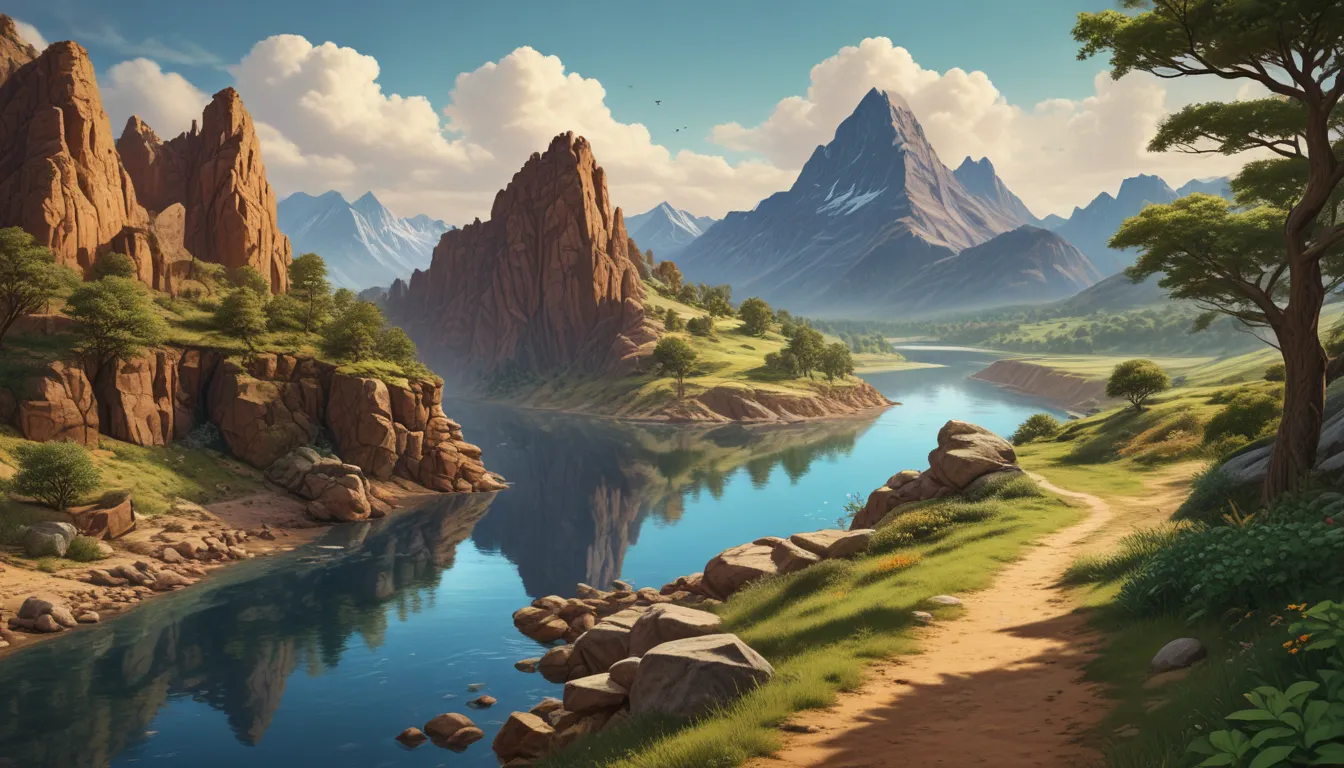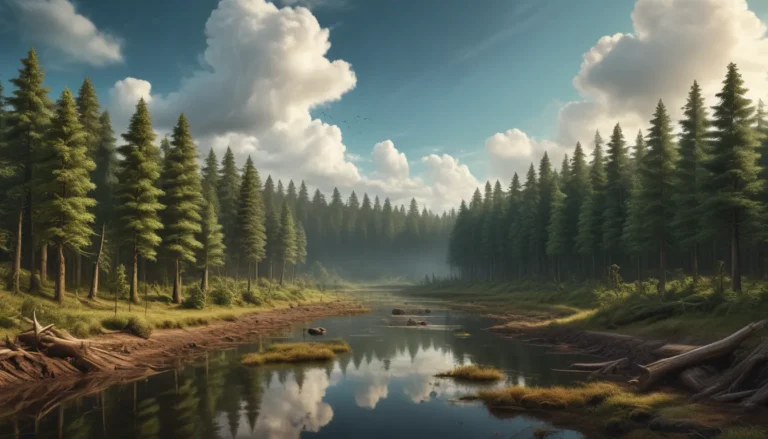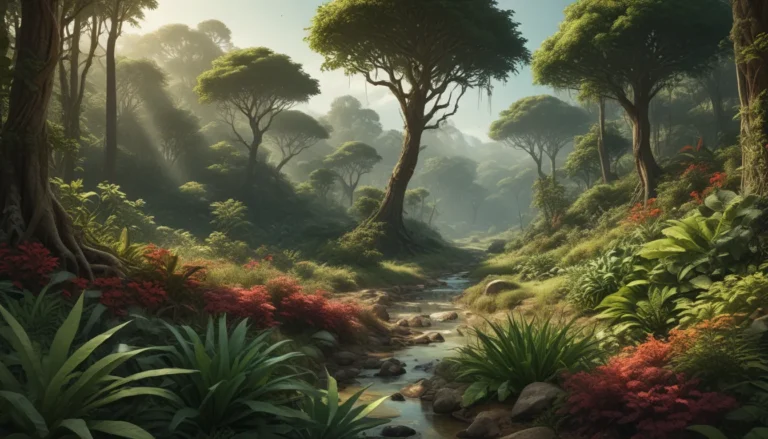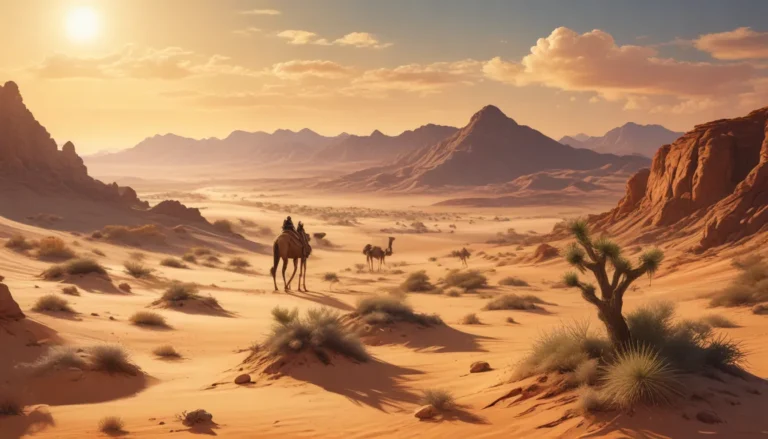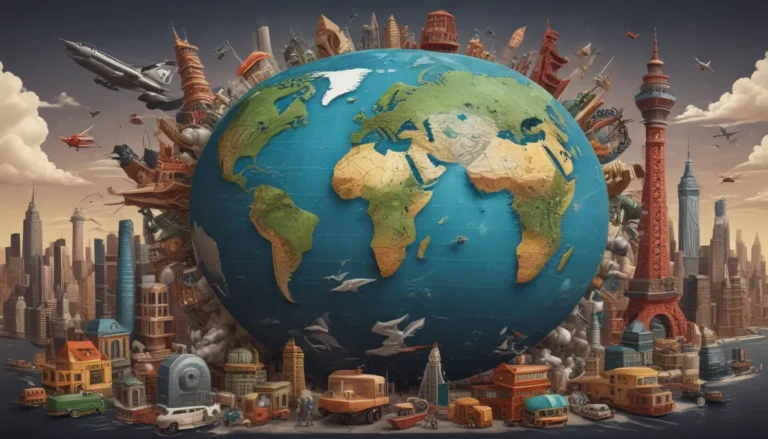A Note About Images: The images used in our articles are for illustration purposes only and may not exactly match the content. They are meant to engage readers, but the text should be relied upon for accurate information.
Are you ready to embark on an exciting exploration of Earth’s physical wonders? Welcome to the world of physical geography, a fascinating field that delves into the Earth’s natural features, processes, and patterns. From towering mountains to vast oceans, from weather systems to landforms, physical geography offers a glimpse into the intricate workings of our planet’s diverse landscapes. Join us as we uncover 15 astounding facts about physical geography that will take you on a journey around the globe and deepen your understanding of Earth’s natural marvels.
Unveiling Earth’s Physical Marvels
The Earth’s Core: A Fiery Heart
Did you know that the Earth’s core is as hot as the surface of the Sun? Deep within our planet, temperatures can soar up to 5,500 degrees Celsius, nearly reaching the scorching heat of our nearest star.
The Sahara Desert: A Growing Giant
The Sahara Desert, the largest hot desert in the world, continues to expand at a rapid pace of about 1 kilometer per month, reshaping its vast sandy landscape.
The Amazon Rainforest: The Oxygen Factory
Stretching across nine countries in South America, the Amazon Rainforest is known as the “Lungs of the Earth,” producing over 20% of the world’s oxygen and supporting a rich tapestry of biodiversity.
The Great Barrier Reef: A Marine Masterpiece
Off the coast of Queensland, Australia, lies the Great Barrier Reef, the world’s largest coral reef system that dazzles with its vibrant colors and rich marine biodiversity, visible even from outer space.
Mount Everest: Reaching New Heights
Mount Everest, the highest mountain on Earth, continues to grow at a steady rate of about 4 millimeters per year, a testament to the dynamic nature of our planet’s tectonic forces.
The Dead Sea: Earth’s Lowest Point
Bordering Jordan, Israel, and Palestine, the Dead Sea holds the distinction of being the lowest point on Earth, sitting approximately 429 meters below sea level.
The Northern Lights: A Celestial Dance
The mesmerizing spectacle of the Northern Lights, or Aurora Borealis, is a result of charged particles from the Sun colliding with Earth’s atmosphere, painting the sky with dazzling hues of light.
The Nile River: A Lifeline of Civilization
Stretching over 6,650 kilometers, the Nile River in Africa is the longest river in the world, meandering through ancient lands and sustaining diverse ecosystems along its course.
The Grand Canyon vs. Yarlung Tsangpo Grand Canyon
While the Grand Canyon in Arizona boasts immense size, the Yarlung Tsangpo Grand Canyon in Tibet holds the title of the world’s deepest canyon, plunging to depths of about 5,382 meters.
The Pacific Ocean: A Vast Abyss
Spanning over 63 million square miles, the Pacific Ocean reigns as the largest and deepest ocean on Earth, with the Mariana Trench plunging to a depth of 10,994 meters.
Mount Kilimanjaro: Standing Tall
Located in Tanzania, Mount Kilimanjaro is the tallest freestanding mountain in the world, soaring to heights of 5,895 meters above sea level and captivating climbers with its majestic presence.
The Great Wall of China: Myth vs. Reality
Contrary to popular belief, the Great Wall of China is not visible from space with the naked eye but can be seen from low Earth orbit with the aid of telescopic lenses, showcasing its immense architectural feat.
The Himalayas: A Mountainous Marvel
Stretching across several countries, including Nepal and India, the Himalayas boast the world’s highest peaks, including the iconic Mount Everest and Kanchenjunga.
The Sahara Desert: Earth’s Desert Dazzler
Covering an area of approximately 9.2 million square kilometers, the Sahara Desert not only expands but also holds the title of being the largest hot desert on Earth, a stark yet stunning landscape of sand and sun.
The Great Barrier Reef: Underwater Wonderland
Beyond its visibility from space, the Great Barrier Reef teems with over 1,500 species of fish and 600 types of coral, making it a haven for marine biodiversity and a treasure trove of natural wonders.
Conclusion: Embracing Earth’s Natural Splendor
In conclusion, the realm of physical geography unfolds a tapestry of Earth’s natural wonders, showcasing the interconnectedness of our planet’s diverse landscapes and phenomena. From the majestic heights of mountains to the depths of ocean abysses, physical geography invites us to marvel at the intricate beauty and dynamic forces that shape our world.
As we unravel the astounding facts and revelations of physical geography, we gain a deeper appreciation for the delicate balance of nature and the awe-inspiring complexity of our planet. Let us cherish and protect our natural heritage, fostering a deeper connection with the Earth and a commitment to preserving its beauty for generations to come.
FAQs: Exploring the World of Physical Geography
- What is physical geography, and why is it important?
Physical geography focuses on understanding the Earth’s natural features and processes, such as landforms, climate, and ecosystems, playing a crucial role in managing resources, predicting natural disasters, and addressing environmental challenges.
- How does physical geography differ from human geography?
While physical geography studies natural aspects of the Earth, human geography explores the relationship between humans and their environment, including cultural, social, and economic aspects.
- What career opportunities are available in physical geography?
Physical geography offers a wide range of career opportunities in environmental conservation, natural resource management, climate research, GIS analysis, and urban planning, catering to those passionate about understanding and preserving our natural environment.
- Can you provide examples of physical geography phenomena?
Examples of physical geography phenomena include plate tectonics, climate patterns, ocean currents, and erosion processes, shedding light on the dynamic forces that shape our planet’s landscapes.
- How do physical geography and human activities interact?
Physical geography and human activities are interconnected, with human actions influencing land use, climate change, and biodiversity, while physical geography shapes environmental conditions that impact human behavior and development patterns.
- Are physical geography facts and insights reliable and accurate?
At Thoughtco.com, our dedicated editors meticulously review each submission to ensure the highest standards of accuracy and reliability, offering trustworthy and engaging content that reflects the diverse insights and expertise of our community.
Are you ready to dive deeper into the captivating world of physical geography and uncover more astounding facts about Earth’s natural wonders? Join us on this enriching journey of exploration and discovery, where every fact unravels a new layer of understanding and appreciation for our planet’s awe-inspiring complexity. Let the wonders of physical geography inspire and invigorate your curiosity as you embark on a voyage of discovery through Earth’s majestic landscapes and phenomena.
